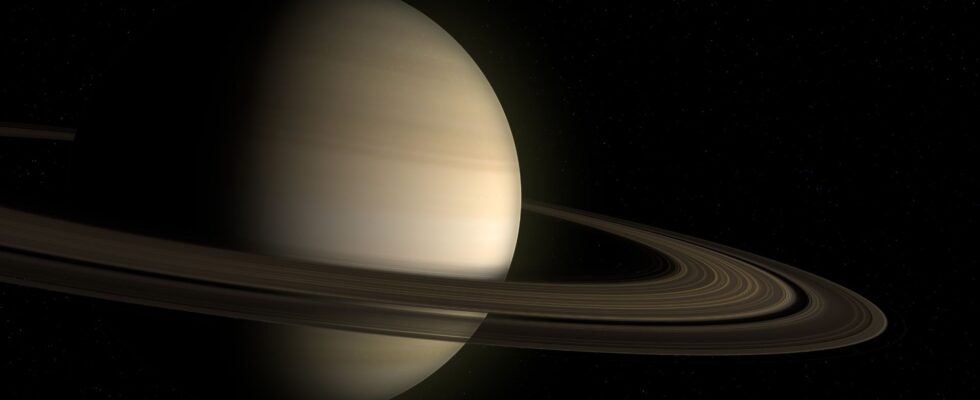One day there will be no more rings around Saturn. Scientists have predicted this, but it is still difficult to say when these rings will be completely eroded. This is where James Webb can come in.
Saturn’s rings disappear. It’s not a scoop: we’ve known it since the Voyager probe observed Saturn in the 1980s. The unresolved question is when they will disappear for good. Scientists are racing against time to find out. Thanks to the James Webb Telescope (JWST), the answer may now be within reach.
The most powerful observatories will be mobilized to solve this mystery, as spotted by Space on May 2, 2023. The research will be carried out by planetary scientist James O’Donoghue, who will work in the meteorology department of the University of Reading, in England. This scientist, who has already worked for NASA and Jaxa (respectively, the American and Japanese space agencies), is passionate For years for the rings of Saturn.
We know that these rings in rotation around Saturn are made up of imposing blocks of ice. However, due to the intense gravity of the gaseous planet, the particles composing the rings gradually rain down towards the surface of the large planet.
Saturn’s rings are young and temporary
We spontaneously think of Saturn as the “ringed planet” of the solar system (although it is not the only planet with rings), but we often forget that their existence is not permanent. According to some scientists, these structures are even quite young in the history of the solar system: they may only be 100 million years old.
For comparison, the solar system formed 4.5 billion years ago, and Saturn would have positioned itself where it is today 4 billion years ago. Saturn’s rings probably didn’t exist for most of the dinosaurs’ reign on Earth. It is estimated that there are only a few hundred million years left on the rings, which is fast on the scale of the universe. But that remains to be confirmed.
James Webb will scan Saturn’s rings from space
In order to find out when the rings will completely erode, scientists will scrutinize them using several instruments. The WM Keck Observatory on Mount Mauna Kea in Hawaii will be used. But he will not be alone: from space, James Webb will also follow the rhythm of destruction of these hoops of ice evolving around Saturn.
Together, the telescopes will monitor the phenomenon of “annular rain” on Saturn, for an entire season (a duration equivalent to 7 years on Earth). ” The instrument of the Keck we used before has been upgraded, and we have never used the JWST for it yet “Summarizes James O’Donoghue with Space. A scenario to check would be that the rain is more abundant when the rings are tilted towards the Sun.
If James Webb and WM Keck confirm that Saturn’s rings will not live very long (on a space scale), it will be a great scientific breakthrough. We will probably measure our luck even more to be able to observe them and use them to learn more about Saturn.
Do you want to know everything about the mobility of tomorrow, from electric cars to pedelecs? Subscribe now to our Watt Else newsletter!
